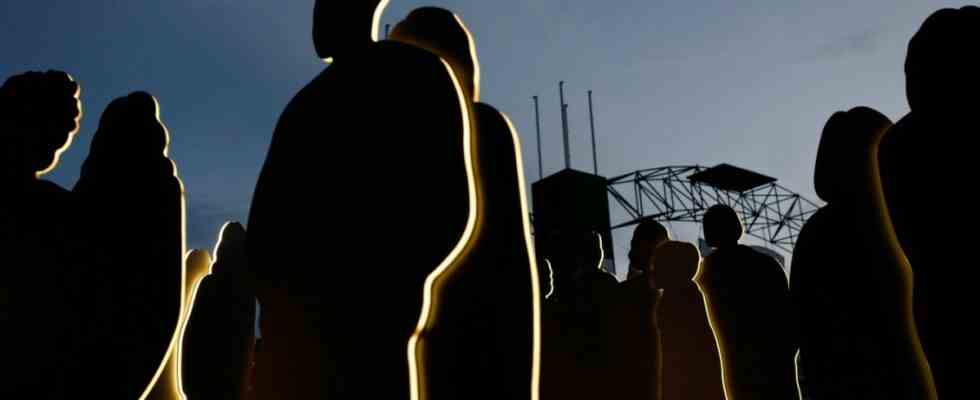In this Wiesn year, it is no longer so easy to overlook the memorial sites for the Oktoberfest attack. To the right of the main entrance to the Festwiese, in front of the well-known semi-circular steel wall, is a bronze stele with the inscription: “In memory of the victims of the bomb attack of September 26, 1980”. And on the left you can now see 234 life-size, illuminated metal silhouettes crowded into a small space. A new, impressive documentation, which was inaugurated in 2020 and was a little offside, after all there were no Wiesn twice. Nobody can now look away – even if this has been the case for decades.
“The attack was classified as an act of a non-political individual perpetrator and thus sort of ticked off,” said Munich Mayor Dieter Reiter (SPD) on Monday at the commemoration of the 42nd anniversary of the assassination. On the evening of September 26, a bomb killed twelve Oktoberfest visitors – children, young people, women and men – as well as the right-wing extremist bomber Gundolf Köhler. More than 200 people were injured. A total of 234 people were affected by the horrific attack, hence the number of silhouettes. It was the worst right-wing extremist attack in the history of the Federal Republic. The federal prosecutor’s office classified Köhler’s act as right-wing terrorist only two years ago.
The DGB youth Munich, who tirelessly kept the memory alive over all the years and all the forgetting, also this time distributed white fabric carnations to pin and long, red carnations, which the guests of the commemoration later laid in front of nine wreaths around the stele . It is inconceivable that 42 years ago, while many of the victims of the attack were fighting for their lives in the hospitals, this place was cleaned up at lightning speed so that the Oktoberfest could continue the next morning. At that time, helpers removed body parts and swept the place. The funnel that the bomb had ruptured was quickly paved with asphalt. Even the arch of fir branches spanning the main entrance was hastily patched.
The “memory is awake,” said Reiter to the survivors and relatives of the victims. “Today we think of those who were violently torn from their lives here at that time and the others who survived but still suffer from their serious injuries or feel deep grief at the loss of loved ones.” The fight against right-wing extremism must be continued with all forces. “It is also very important to recognize acts of violence motivated by right-wing extremists as such and to clearly name them,” said the mayor.
Jim Evans was stationed in Germany as a soldier in 1980. After strolling through the Wiesn with other comrades, he was seriously injured.
(Photo: Stephan Rumpf)
Reiter particularly welcomed former US soldier Jim Evans from Michigan, who was stationed in Germany in 1980 and was seriously injured in the assassination along with other comrades. Evans has never been to Germany since then, only two years ago he contacted the city and brought a wreath with him. Among the survivors was 54-year-old Robert Höckmayr, who lost two siblings in the attack, was seriously injured himself and had to fight for compensation for decades. Or Dimitrios Lagkadinos, who was 17 when he and his girlfriend walked past the rubbish bin where the bomb was hidden. His girlfriend Gabi died and his legs had to be amputated.
Dimitrios Lagkadinos was 17 when he walked past the bin where the bomb was hidden. His legs had to be amputated.
(Photo: Stephan Rumpf)
Many city councilors came to the city’s commemoration, the mayors Katrin Habenschaden (Greens) and Verena Dietl (SPD), some members of the state parliament, Ernst Grube from the Dachau camp community, police chief Thomas Hampel, US Consul General Timothy Liston and survivors of the OEZ attack . Those who didn’t come: representatives of the Bavarian state government. “Only once was a federal president here, only once a prime minister and only once a minister of the interior,” said Florian Gersten from the DGB youth group. “The fact that the Bavarian Prime Minister is not there today is an absolute no-go.” The youth organization’s next goal: to get the Oktoberfest assassination as part of the teaching material on the Bavarian curricula – “as a lesson on right-wing terror, right-wing networks and the suffering of survivors.”

